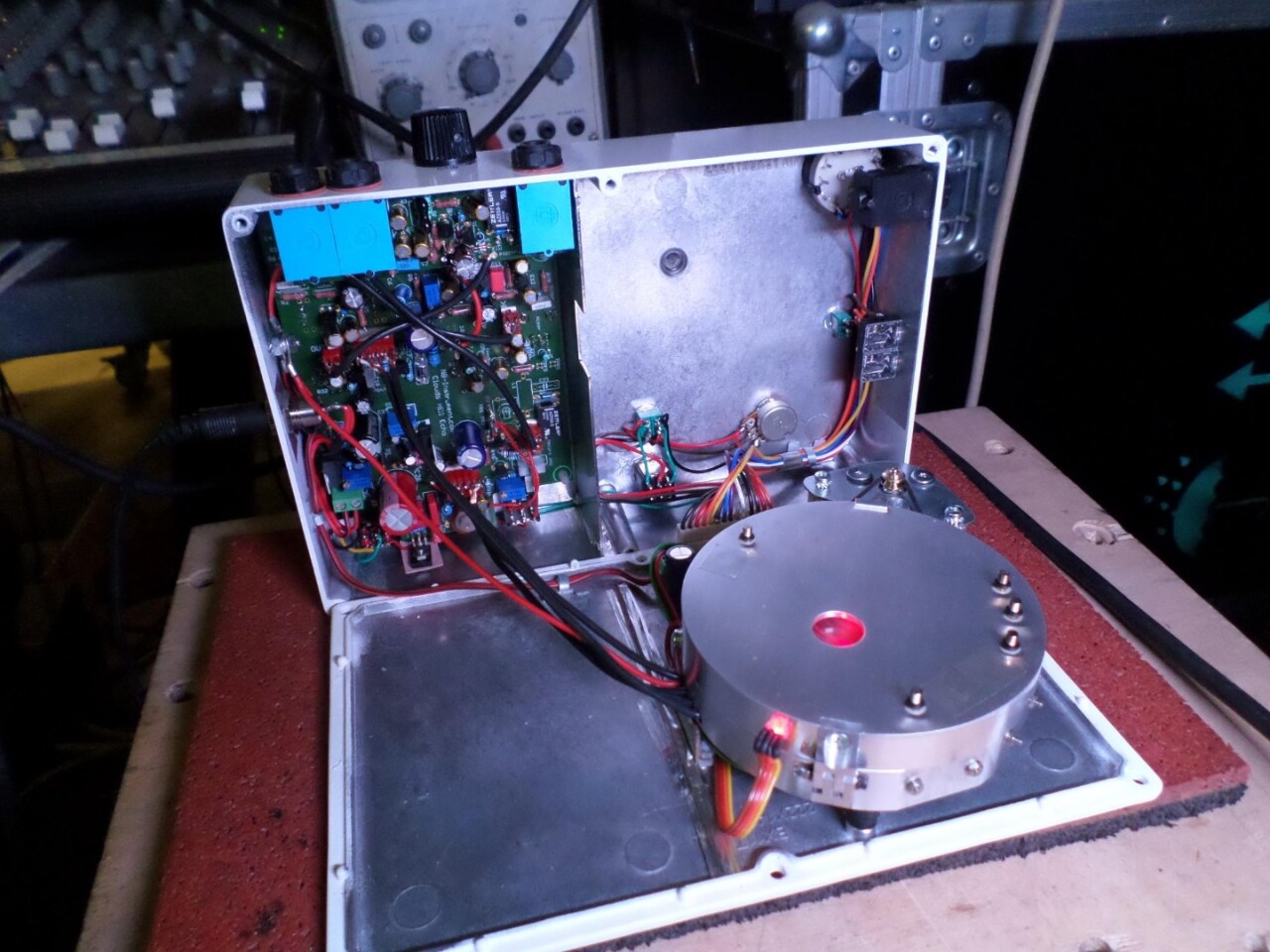Having a guitar sound repeat once or more can be a powerful playing weapon, and has been used to great, ahem, effect by axe gods like Brian May and Jimmy Page for a good many years. Before digital stomps wrapped the effect up in a pedalboard-friendly box, players would gun for looped tape machines like the Echoplex and Space Echo. Now technicians from a German music company have come up with an oddball analog echo effects unit that generates the delay effect using a 3.5-inch floppy disc.
Proof positive that old computer tech never really dies, the floppy disc inside the Echo delay pedal is driven by a 12 V DC digital drive tapedeck motor. A footswitch is used to engage and disengage the motor, and a switch to the top left of the unit is used to dial in one of four different motor modes, including one to increase or decrease the speed using a cabled expression pedal) and another to simulate an aging tape machine.
The incoming instrument signal is routed through a JFET input stage and written to the magnetic storage medium with the device's record head and then replayed/erased by two reproduction heads and one erase head. The position of the heads allows for short delays of 0.06 seconds to a longer echo of up to 1.6 seconds, and the unit is reported to offer a wide palette of sounds, ranging from unpredictable start/stop events to atmospheric swirls.

Elsewhere, there's a flashing light above the unit name called the Magic Eye which flickers to show echo speed, error frequency or random error frequency, a knob for overall gain adjustment, another for dry/wet blending and one to dial in feedback (multiple echoes). The 222 x 145 x 55 mm (8.7 x 5.7 x 2.2 in), 1.36 kg (3 lb) box, which is powered by an included 15 V/1 A DC supply, also sports a footswitch to mute the delay effect and a bypass switch. The delay effects can be controlled by an external expression pedal or CV/gate control, too.
Clouds Hill FX says that due to limited vintage component availability, only 30 Echo units will be made. Ever.
Boxes wearing serial numbers 002 to 009 will ship for €1,999 (about US$2,250) from May 1, though can be pre-ordered now, while serial numbers 010 to 030 will ship from July for €1,499. All units are assembled by hand and undergo pre-shipping inspection by Nick Baginsky of NB Instrument.
Source: Clouds Hill FX







